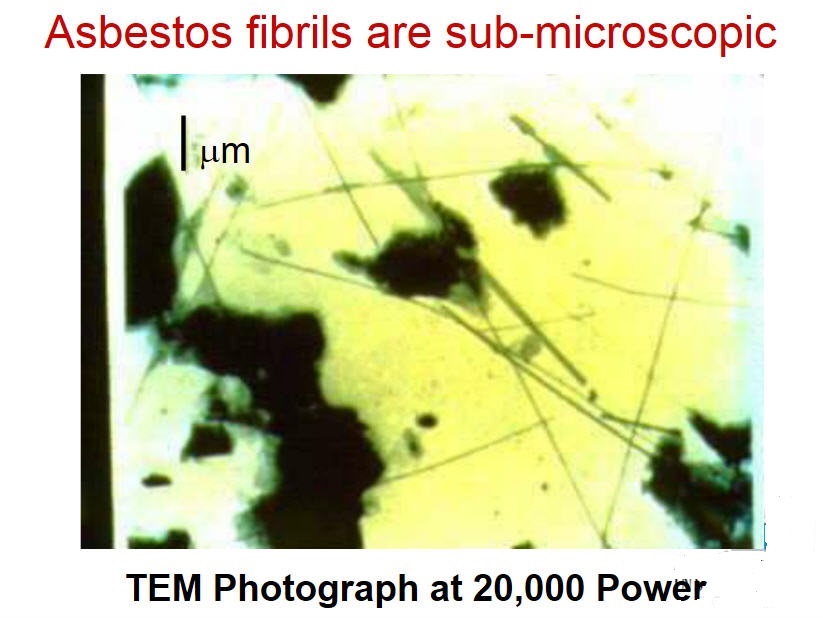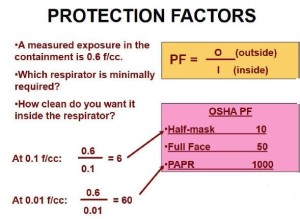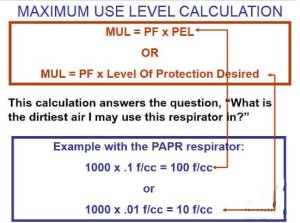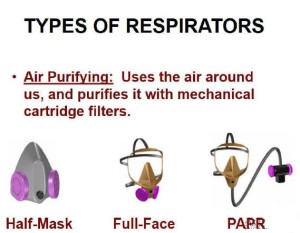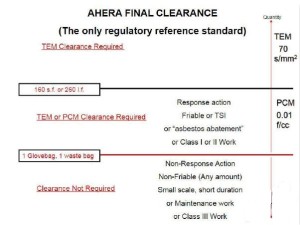Asbestos Contractor Los Angeles, CA
(Main Service Areas: Malibu, Beverly Hills, Los Angeles)
 Asbestos is one of the most significant health hazards one can encounter in buildings. This mineral fiber is often used for insulation and as a fire retardant, as well as in a variety of manufactured goods. While its uses are many, it can be dangerous if the material is disturbed, damaged, or unsettled in some way, releasing particles into the air, and should be removed by a professional Los Angeles, CA asbestos contactor. Common belief holds that the substance was banned by the United States in the late 70s; however, it was only phased out for certain uses, and indeed is still found in a variety of other uses today. What the concerned resident wants to look out for, however, are those instances where asbestos poses a risk to the health of those living or working near its presence. How to know when you have an asbestos problem? This page will provide some useful tips to watch out for, and should there be an issue, the asbestos contractors at Nielsen Environmental are here to take care of the problem promptly and efficiently.
Asbestos is one of the most significant health hazards one can encounter in buildings. This mineral fiber is often used for insulation and as a fire retardant, as well as in a variety of manufactured goods. While its uses are many, it can be dangerous if the material is disturbed, damaged, or unsettled in some way, releasing particles into the air, and should be removed by a professional Los Angeles, CA asbestos contactor. Common belief holds that the substance was banned by the United States in the late 70s; however, it was only phased out for certain uses, and indeed is still found in a variety of other uses today. What the concerned resident wants to look out for, however, are those instances where asbestos poses a risk to the health of those living or working near its presence. How to know when you have an asbestos problem? This page will provide some useful tips to watch out for, and should there be an issue, the asbestos contractors at Nielsen Environmental are here to take care of the problem promptly and efficiently.
Nielsen Environmental, an experienced Los Angeles asbestos contactor, uses engineering controls, three chamber decon and class 1 workers when removing friable asbestos. We have referrals from clients, including documentation from each project including the initial notification given to SCAQMD through to the close out of the project, using the manifest as proof that the asbestos was taken to the NESHAP approved landfill for disposal.
What is Asbestos?
Any group of naturally occurring minerals with silicate composition, crystalline structure, and fibrous form.
History
Commercial use of asbestos in the US dates back to the beginning of the industrial revolution--about 1850. Steam was the power that drove industry at the time, where asbestos was used as a sturdy insulator for steam engines, boilers, ovens, and generators. Plaster and cement came into use around 1920, with "transite" panels and pipe using the mineral. Around 1935, asbestos began to be used for spray-applied fireproofing; after WWII, huge tonnages were then applied to building construction. The window in time when most different asbestos products were installed in buildings was from 1945-80: in 1945 the boom was a result of post-war research and development, but by 1980 as the hazardous effects of asbestos reached a crisis point, its usage decreased as a result of EPA bans and property damage liability. The peak year of asbestos used for building materials was 1973 and in that time hundreds of thousands of buildings were outfitted with the substance; this now requires the presence of asbestos abatement contractors to meet the needs of removal.
What are some of the health effects of asbestos exposure? The following are some of the major health risks associated with the mineral:
ASBESTOS DISEASES
Lung Cancer
- Cancer of the lung tissue associated with the bronchial tubes.
- 20-30 year latency period
- 90 times greater incidence in occupationally exposed smokers
Asbestosis
- Scarring of the lungs at the alveoli
- Inhibits oxygen transfer into the blood
- 15-20 Year Latency
Mesothelioma
- A cancer of the pleural and/or peritoneal membranes
- 20-45 year latency, possibly longer
OCCUPATIONAL EXPOSURE
- An ongoing exposure as a result of the work being performed, perhaps for a working career.
- Historical "waves" of asbestos disease include factory workers, shipyard workers, and the construction/maintenance industry
PERMISSABLE EXPOSURE LIMITS--There are two PEL's:
- 1. Time Weighted Average (TWA): 0.1 f/cc
- 2. Excursion Limit (EL): 1.0 f/cc
Both must be measured for. If either one is exceeded, the PEL has been exceeded, and certain controls must be implemented.
OK, so it's been determined a particular building requires asbestos removal. What does that entail?
CLASSES OF WORK DEFINITIONS
- Class I Work....................The removal of TSI, fireproofing or popcorn
- Class II Work...................The removal of anything else
- Class III Work..................The small scale, short duration disturbance of ACM
- Class IV Work..................Contact, but no disturbance or cleanup of previously generated debris.
BUILDING OWNER ISSUES
- PACM: TSI & Surfacing
- Resilient Flooring Predating 1981
- "Due Diligence" Identification
- Notification
- Asbestos Abatement Contractors
- Maintenance Employees
- Adjacent Contractors
- Tenants
- Recordkeeping
Proper Disposal of Waste Every load of ACWM that leaves the site requires detailed information on:
- Work site location
- Owner
- Operator
- Waste disposal site
- NESHAP jurisdiction(s)
- Description and amount of materials
- Signed by operator (retain copy)
- Signed by transporter (retain copy)
- Signed by WDS (retain copy)
- Copies must be maintained for 2 years
Ordered Demolitions and Emergencies Emergency Renovation: Means a renovation operation that was not planned but results from a sudden, unexpected event, that if not attended to, presents a safety or public hazard. This is necessary to protect equipment from damage, and/or to avoid imposing an unreasonable financial burden. Ordered Demolition: The structure is being demolished under the order of a State or local government agency, issued because the facility is structurally unsound and in danger of imminent collapse. It is important to remember that poor planning does not meet these requirements.
Notification Requirements For Asbestos Abatement:
- Must be at least 10 Working Days before job start.
- Postmarked or hand delivered to proper agency of jurisdiction.
- Details on owner, operator, type of operation, site location & description, amounts of ACM, start/finish dates, description of work, waste transporter, waste disposal site, compliance statements.
- Updated with changes as needed:
- Name of Contractor
- Start date
- Finish date
- Amounts of RACM, Cat I or Cat II
- Any other substantive changes
Working days: Monday through Friday, including holidays. Here at Nielsen Environmental we understand that asbestos removal is an urgent matter, so we'll work through holidays to get the job done!
These are some of the lengthy, painstaking procedures our company uses to ensure that the asbestos abatement proceeds as smoothly and safely as possible, according to strict state and federal guidelines:
RESPIRATORY PROTECTION PROGRAM
- Written SOP on selection and use
- Medical evaluations
- Fit testing procedures
- Procedures for proper use
- Cleaning, storing, inspecting, repairing, maintaining
- Atmosphere-supplying respirator air management
- Training in respiratory hazards
- Training in proper use, limitations & maintenance
- Procedures for program effectiveness evaluation
Personal Air Monitoring
- To prove no employee exposure above the PEL
- Required by OSHA for all Classes or Work
Clearance
- To prove an area of recent abatement is safe for re-occupancy.
- Required on AHERA facilities at the completion of response actions.
Air Sampling Permissible Exposure Limit
- TWA: 0.1 f/cc (480 min)
- EL: 1.0 f/cc (30min)
Cassettes Mixed Cellulose Ester (MCE)
- 25 Millimeter Diameter
- 50 Millimeter Diameter
- Breathing Zone (4 inches)
- Flow Rate of 0.5 - 2.5 LPM (personal), 8-12 LPM (Clearance)
- Cassette Sloped downward at least 45 degrees
- Pump is calibrated before and after sampling
- Minimum volume to be collected is 3850 LPM
Asbestos abatement cost often takes into account these varied and complex factors in asbestos removal. At Nielsen Environmental we will provide you the best possible value for our service; contact us now to speak with a representative who will actually listen to your needs and concerns--we're here to remove the headache and ensure your safety.
Asbestos Abatement
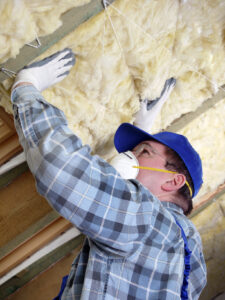 As your professionals for Asbestos Abatement can tell you, the production of asbestos has been against the law in the United States for several decades now. However, the impacts of asbestos have lingered, and are still present in buildings that were constructed before the 1980’s. Common areas where asbestos can be found are in insulation, flooring, roofing, fire proofing, adhesives, and wall or ceiling materials.
As your professionals for Asbestos Abatement can tell you, the production of asbestos has been against the law in the United States for several decades now. However, the impacts of asbestos have lingered, and are still present in buildings that were constructed before the 1980’s. Common areas where asbestos can be found are in insulation, flooring, roofing, fire proofing, adhesives, and wall or ceiling materials.
The process of eradicating asbestos and reducing its effects is called asbestos abatement. The initial step involves an inspection of the property to assess for asbestos presence, and determining the hazard level and risk. Asbestos doesn’t always necessitate abatement, as if left alone and intact, it can be kept in place with little risk of exposure. Those who are considering renovation or demolition should make a plan to have the asbestos found and removed safely.
If you suspect that asbestos is found on a property, then you must contact a Los Angeles asbestos contractor who is licensed, that can send out a professional to test the material. Then, they can inform you of where asbestos is present and whether abatement is recommended. The safety of those living in or visiting the property should take precidence, and your inspector can estimate a cost for abatement if needed. The process of asbestos abatement often goes as follows:
- Creating a plan
- Proper demarcation
- Setting up a work area
- Removing material
- High-efficiency vacuuming
- Final cleaning or repair
- Post-clean up
Once the clearance criteria has been met, your contractor will remove the containment barriers and clean the area once again using HEPA vacuuming. After completion, you will get a report that summarizes waste shipment, site logs, records, and copies of licensing. You will also receive an industrial hygiene report entailing copies of laboratory results and inspections. Keep these records to show compliance in proper asbestos removal and environmental regulations.
For immediate help with an asbestos issue, contact Nielson Environmental about Asbestos Abatement in Los Angeles, CA today!
Asbestos Abatement and Demolition Services:
Asbestos Abatement Contractor Los Angeles CA
What Is Asbestos Abatement, And Why Is It Important?
As your Los Angeles, CA asbestos contractor knows, asbestos abatement is the process of safely removing and managing asbestos-containing materials (ACMs) in buildings and structures. It is crucial because asbestos, when disturbed, can release harmful fibers into the air, which, when inhaled, can lead to serious health issues, including lung cancer and mesothelioma. If you have any reason to believe that you have asbestos on your property, please call a professional team for help.
How Can I Tell If My Property Contains Asbestos?
Identifying asbestos-containing materials (ACMs) in your property can be challenging, as asbestos is often mixed with other materials. A professional asbestos inspection by a certified asbestos abatement company is the best way to determine if your property contains asbestos. They can conduct thorough assessments and collect samples for testing.
What Does The Asbestos Abatement Process Entail?
The asbestos abatement process involves several steps, including:
- Inspection and assessment to identify ACMs.
- Development of an abatement plan.
- Isolation of the work area to prevent asbestos fibers from spreading.
- Removal or encapsulation of ACMs using specialized equipment and techniques.
- Proper disposal of asbestos waste in accordance with regulations.
- Air monitoring to ensure the area is safe for reoccupation.
Is Asbestos Abatement A Diy Project?
No, asbestos abatement should never be attempted as a DIY project. It requires specialized training, equipment, and adherence to strict safety regulations. Attempting to remove asbestos without the proper knowledge and experience can put your health at risk and may lead to legal consequences. Always hire a licensed Los Angeles asbestos contractor for this task.
Attempting to remove asbestos without professional assistance is extremely risky. Asbestos fibers, once disturbed, can become airborne and pose severe health hazards. Professionals are trained to handle asbestos safely, using specialized equipment and following strict protocols. DIY removal can result in exposure to asbestos, potential legal consequences, and inadequate containment, making it imperative to rely on certified experts for any asbestos abatement needs.
What Are The Legal Requirements For Asbestos Abatement?
Asbestos abatement is subject to various federal, state, and local regulations. Compliance with these regulations is essential to ensure safety and avoid legal issues. Licensed asbestos abatement contractors are well-versed in these regulations and can help you navigate the legal requirements while safely managing asbestos in your property.
Call A Team You Can Trust With Your Health Today
If you suspect asbestos in your property or require asbestos abatement services, don't hesitate to contact our team for a professional assessment and safe removal. Your health and the safety of your property are our top priorities. Let us help you with your asbestos abatement needs today.
Please feel free to reach out to Nielsen Environmental for any further questions or to schedule an asbestos inspection. Your safety is our priority, and we are here to assist you every step of the way in managing asbestos in your property. Contact our Los Angeles asbestos contractor today for a consultation, and let us provide you with the peace of mind you deserve.


